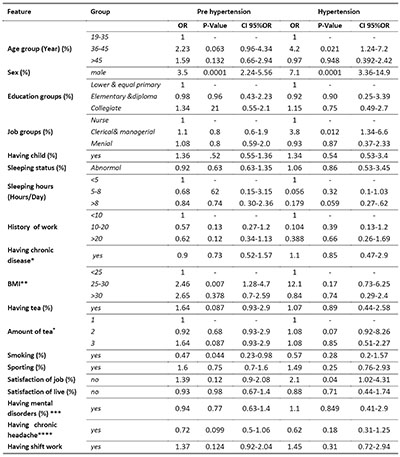
Prevalence of Hypertension and Associated Variables in Hospital Staff in Iran
Abstract
Introduction: The aim of this study was estimating the prevalence and risk factors of pre hypertension (Pre-HTN) and hypertension (HTN) among the staff of Shiraz (located at south of Iran) hospitals. Methods: A random sample of 1027 staff was selected. Sampling method was categorical random sampling. Part of the data was collected using interviews, while the rest was obtained from clinical examinations. Results: In this study 30.5% were males and 69.5% females. The prevalence of pre hypertension (Pre-HTN) and hypertension (HTN) was 37.0% and 8.6% respectively. Among these, 95.45% had Grade 1 and 4.55% Grade 2 hypertension. The prevalence of Pre-HTN and HTN was significantly higher in men than in women. Only 6% of hypertensive staff were on anti-hypertensive pharmacological treatment. Among the treated patients, BP was under control in 35% of staff. Multiple multi nominal regression analysis revealed that overweight and non-smoking males were strongly associated with Pre-HTN. The Male gender, increasing age, to work in clerical group and job dissatisfaction was strongly associated with HTN. Conclusion: The strikingly low level of knowledge and failure to control hypertension in hospitals are problems that need to be considered. Due to prominent difference in prevalence of this disease in men and women, male hospital staff should be considered as a high-risk group. Body mass index (BMI) and job satisfaction are two adjustable variables which need practical remedies. Advancement of knowledge and emphasis on physical activities for white-collar personnel are important steps that have potentially positive effects. In addition, although more studies are needed to investigate the relationship between cigarette smoking and blood pressure, it is prudent to monitor blood pressure closely in cardiac patients who are obligated to quit smoking.
Keywords
hypertension; hospital staff; Iran
DOI: 10.5457/ams.v39i1.138
